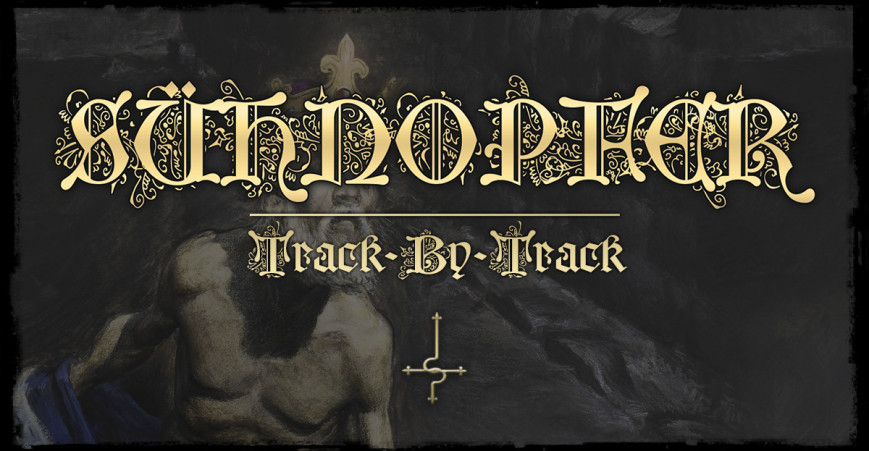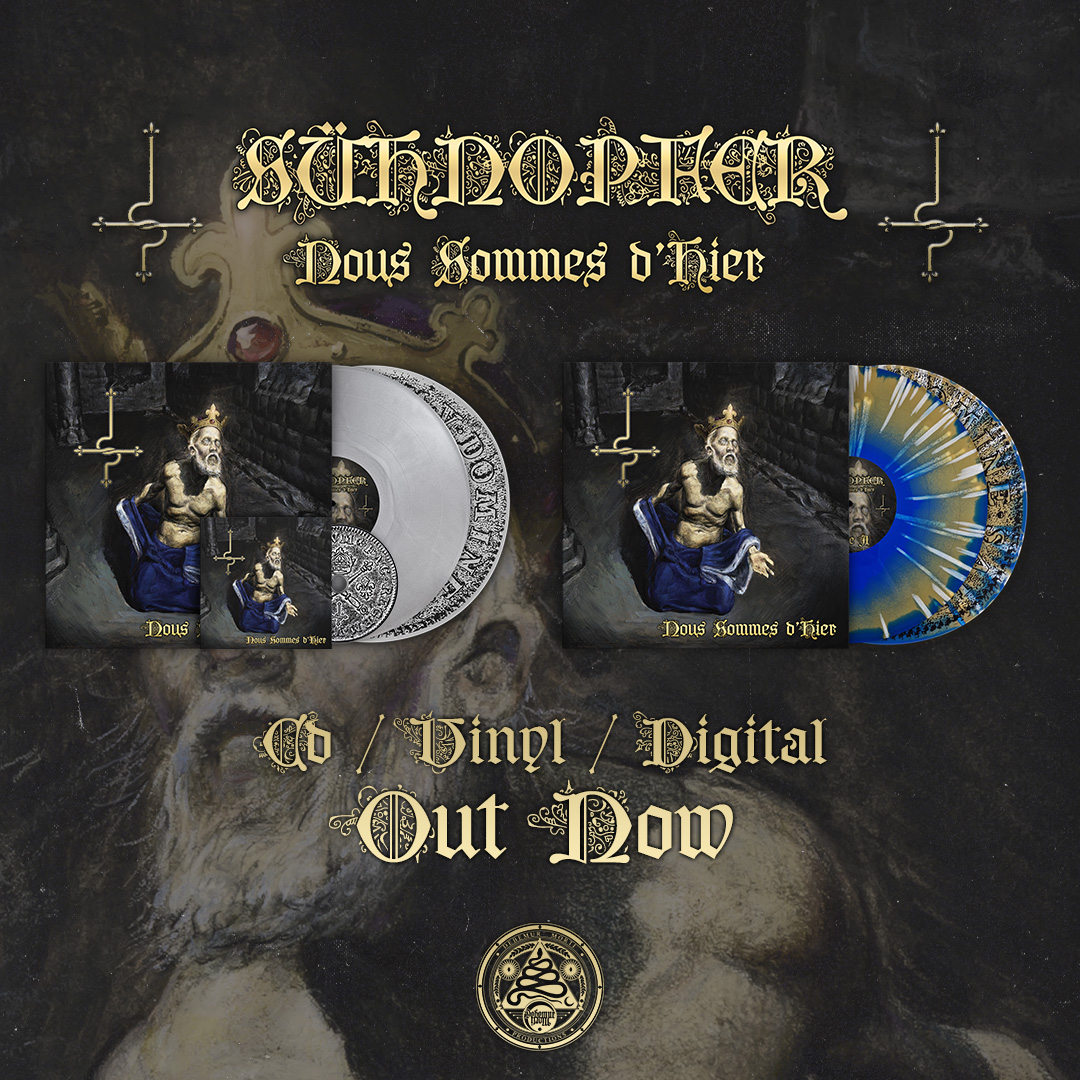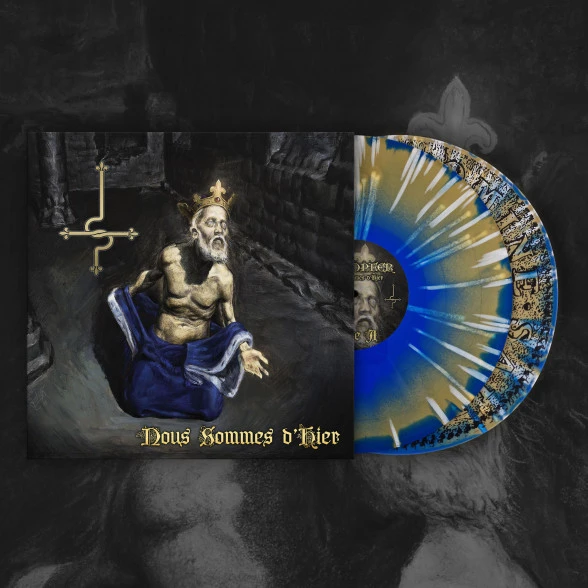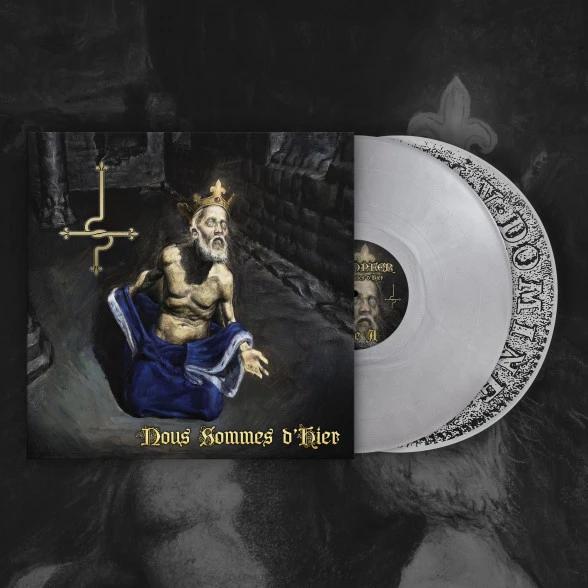Blog search
Artists
- Aara
- Akhlys
- Anfauglir
- Archgoat
- Arkona
- Aversio Humanitatis
- Behexen
- Beneath Moonlight
- Blood Abscission
- Blut Aus Nord
- Bong-Ra
- Cailleach Calling
- Eitrin
- Ershetu
- Godkiller
- I.C.E.
- Inferno
- Insect Ark
- Kaleikr
- Light Of The Morning Star
- Lychgate
- Martröð
- Miserere Luminis
- Modern Rites
- Mütterlein
- Óreiða
- Other World
- Pestifer
- Pestilength
- Pestilent Hex
- Plebeian Grandstand
- Pure Wrath
- Selbst
- Servants Of Chaos Festival
- Slidhr
- Sühnopfer
- Taubrą
- Terra Tenebrosa
- The Lovecraft Sextet
- Throane
- Ulcerate
- Waidelotte
- White Ward

SÜHNOPFER – Track-By-Track
On 6th October, SÜHNOPFER released their fourth album "Nous sommes d'Hier" containing seven compositions of uniquely epic Baroque Black Metal. For deeper insight into the music and lyrics, we present Ardraos' in-depth track-by-track analysis which highlights each song individually.
Listen to the album directly here while reading Ardraos' explanations for each song below:
'D.S.F.R.'
This track was composed between 2020 and 2021, but the title and lyrics came some time later. The reason for this is that I worked meticulously on a part of original Baroque music by Marc-Antoine Charpentier, whose writing dates back to 1681 (work H.291). I found this 'anthem' very inspiring, and this seemed like evidence to me that I had to give it substance and my personal interpretation through SÜHNOPFER. It also served as the basis for a specific passage of this track. But I reworked it extensively. I was able to insert my own choirs and many other elements.
Originally, this title was quite simply the national anthem practiced in the kingdom of France under the old regime. It comes from 'motets' used in the local liturgy (prayer for the King during masses) before becoming very popular in the form given to them by Charpentier and other composers under Louis XIII and Louis XIV. SÜHNOPFER's title itself evokes this past by metaphorically referring to the death of royalty, imagining what might be the return of powerful ghosts from that era. Charles Dubus then worked on the cover, drawing inspiration from the music and texts of the album, and this painting of course partly reflects this title, but also forms a whole with the rest of the tracks.
'Nous sommes d'Hier'
The composition of this track was intended to be very effective and without frills. It should remind the listener a bit of SÜHNOPFER's debut album "Nos Sombres Chapelles" – with very direct and catchy riffs, emphasizing the epic side of the band. I wanted the full album to carry this title which totally reflects its state of mind, relationship to the past and to religion (see also here). On this track, the narrator positions himself as a revenant of a bygone era ready to oppose the modern world. Wiser ones will be able to note a few lines in homage to a famous, recently deceased, royalist writer.
'Sermon sur le Trépassement'
This is the richest track and for me, alongside 'D.S.F.R.', the most accomplished on the album. The composition focuses on very baroque guitar leads and riffs, shaped to achieve massive impact. The incorporation of choirs - shared with Vindsval (BLUT AUS NORD) - brings an invocational dimension to this track right up to the finale which consists of a very melancholic part, also enhanced by Vindsval's lead guitar lines. The lyrics are inspired by the "Sermon on the Death of the Sinner" by French philosopher Massillon. This type of sermon was widely used to inspire fear of a terrible death for sinners or unbelievers.
'Pays d'Allen'
This is another track paying homage to my native lands and to the Bourbon lords. "Allen" was their motto, and it simply meant: "All With God". The track begins in a very progressive way with acoustic guitar lines shaped with precision, a cross between Baroque and Medieval atmospheres. What follows are SÜHNOPFER's emblematic riffs, again leaning towards the epic and chivalrous side. The text is inspired by various poems descriptive of local landscapes and their obscure legends.
'Céron'
This track is musically more chaotic and aggressive than the others. The riffs are a little more obscure, with more palm-muting and leads representative of sharp Black Metal. This seemed to be the perfect way to approach the theme of witchcraft on this album. 'Céron' is the name of the place where the story occurs, it is the location where one of the last witches in the region was known to live at the end of the 19th century. By reading the stories and legends generated by her existence, I immersed myself in fascinating research and found her traces in the archives (certificates, censuses, et cetera), the old inn she lived in, and even some of her descendants.
'Derniers Sacrements'
This track opens and closes with SÜHNOPFER's enhanced version of "Requiem in C minor" composed by Luigi Cherubini in 1816. It was originally premiered on January 21, 1817 at the Basilica of Saint-Denis for a ceremony commemorating the 24th anniversary of the execution of Louis XVI. This entire track revolves around the end of the royal family during the French Revolution, and particularly around the death of Louis XVII, son of Louis XVI, in a 'Temple' prison on June 8, 1795, at the age of 10 years. His death happened after he spent 3 years locked in secret in a dark dungeon, without any hygiene or care. This track alternates darkened riffs with brighter passages, based on the last moments and words of this child-King which were precisely transcribed.
'Le Bal Des Lazes'
I already hear what you are thinking: but why this cover? What the hell does Polnareff have to do with Black Metal? I listened to this artist a lot during my childhood. I also rediscovered his work more recently with 'new' ears as an established musician. And I said to myself, why not make a Black Metal version of this song? The tonalities of the song and its funereal theme seemed to me to be perfectly suited to the universe of SÜHNOPFER. And all organ parts on the original track could be replaced by guitar lines, arranging them as I do usually for my own compositions. I just changed the tonality so it could fit my clean vocals. It was not initially planned to appear on the album. The album was intended to end with 'Derniers Sacrements'. But once recorded, I couldn't see myself not releasing this song at the same time as the rest of the work. For those who think it's in the wrong place on the album, consider this as a bonus track!
"Nous sommes d'Hier" is available on CD and vinyl via our EU, US and Bandcamp shops.

No products
To be determined Shipping
0,00 € Total

